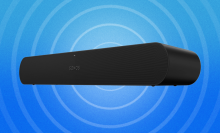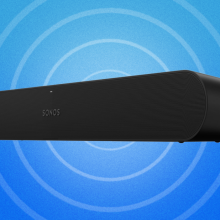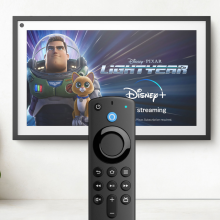Table of Contents
My TikTok FYP is full of viral products that are worth the hype (here’s looking at you, Solawave), but there are also a lot of viral products that are…less exciting. Deciphering between the two can be difficult, especially when it comes to products that don’t show “visible” results, like skin or haircare gadgets or the latest kitchen must-have.
With that in mind, when I first heard about the Renpho Eyeris 3, I was a little skeptical. It’s a Bluetooth-enabled electronic eye massager that’s all over TikTok, and it’s easy to see why. The Eyeris 3 is a futuristic, voice-controlled device that provides multiple modes of massage pressure, heating, and an optional gel cooling mask — all while claiming to help you destress, treat eye fatigue, and even help with dry eyes.
But does it actually work? I spent a month with the Renpho Eyeris 3 to find out.
First thoughts: I wasn’t super excited to try the Renpho Eyeris 3
As someone who has always struggled with intense seasonal allergies and chronic dry eyes, I was both excited and nervous about trying the Eyeris 3. I’ve used various eye masks before, like microwaveable heat masks and cold compresses, and they all came with varying results. I’ve also learned to be more careful with my eye health in recent years, so I was nervous about using a device on such a sensitive area, despite seeing a few rave reviews of the Renpho Eyeris 3.
After consulting with an eye doctor to make sure it was safe to use, I plucked up the courage to delve into my first session with the Eyeris 3, and I was pleased with how it went. Built similarly to a VR mask, the Eyeris 3 fits snuggly over your head — with an adjustable strap to find a comfortable fit — and it features both button control and a voice-activated assistant to navigate the various modes on the device. There are quite a few options to choose from, including the session length, heat level, air pressure intensity, vibration, massage area, and audio. It's also pretty easy to play around with these settings.
After a few minutes of experimenting, I settled into a 10-minute massage session with low heat, soft pressure, and binaural beats playing via Bluetooth to see if it was worth the hype.
Is the Renpho Eyeris 3 comfortable?
After a few sessions, I was happy to discover it was consistently comfortable. A lot of other at-home massage tools fluctuate wildly between not enough pressure and way too much, but I didn’t experience that with the Eyeris 3. To hit this “sweet spot,” the device uses air pressure to apply varying degrees of compression around your eye and temple area, not a physical massage tool, giving it a gentle touch that’s appropriate for the sensitive eye area.
The interior of the plastic mask features soft PU leather, as well as an adjustable strap, and I didn’t have any issues fitting it on my face. Even the weight of the mask didn’t bother me too much when I was lying flat, although I did find that I preferred to use it while sitting up in bed or on the couch.


It was also easy to switch between no heat, low heat, medium heat, or high heat (with temperatures ranging from 104 degrees Fahrenheit to 113 degrees), and I loved that it was a gentle heat, even in high heat mode. I toggled between soft and strong pressure depending on the day, and I generally enjoyed all three of the massage area modes: tension relief (eye and temple massage), retinal protection mode (eyes only), and regeneration mode (temples only). I kept it on tension relief most of the time, but I occasionally used it without any massage pressure when I wanted to just apply heat.
I will say that the vibration mode was probably my least favorite feature, as it felt way too intense for my taste — and not at all comfortable. However, it was easy to toggle vibration on and off, so I skipped it entirely.
Does the Renpho Eyeris 3 actually work?
The Eyeris 3 is a decent relaxation tool. I reached for it most when I had a mild headache, but I also used it when my eyes felt fatigued after a long day of working at my computer. It was nice to take a few minutes to myself, and the option to add the cooling gel mask made it a little more versatile.
The heat functionality is definitely my favorite, and I did notice an improvement in my dry eye symptoms after using the mask. My eyes were a bit blurry for a few minutes after some sessions with the Eyeris 3, but a quick trip to Google told me this was fairly normal for dry eye sufferers — apparently, the heat can help open up oil glands — and it went away quickly.
I also found that the massage functionality gave me mild headache relief, but it wasn’t enough to really wow me, especially on a day when I suffered a nasty migraine. It felt nice to wear the mask, but it didn’t do much more than a hot or cold compress.
As far as some of the other purported benefits, like using vibration mode to boost skin elasticity and brighten dull skin? These felt more like gimmicks than actual benefits, and I certainly never noticed any changes or improvements in my under-eye area. I also didn’t notice improvement to my insomnia or sleep quality. Yes, it was relaxing to use, but it didn’t give me “more” than meditation or breathing exercises at bedtime.
Is it safe to use?
A research review conducted in 2022 determined that eye warming devices are generally safe and effective for those with dry eyes, but I wanted to talk to an expert before trying the Eyeris 3 for myself. Thankfully, I discovered that they are OK to use, but there are a few things you should watch out for with at-home eye massagers.
“Not everyone’s anatomy is the same,” explained Dr. Carly Rose, an optometrist and dry eye specialist. “[So] where it hit you, that’s going to be different than where it hits someone else...so it’s not going to be nearly as customized as if you just do it yourself.”
While hot compresses are generally recognized as part of good eye health, she warned that devices that get too hot, especially in combination with intense pressure on the eye, can cause corneal warping.
This shouldn’t be an issue as long as the temperature isn’t too intense, but Dr. Rose recommends skipping the heat entirely if you have ocular rosacea or intense allergies (since the heat can sometimes make your eyes itchier). If you rubbed your eyes a lot as a kid, or if you have glaucoma or keratoconus, you’ll probably want to skip using the massage feature as well.
If you want to make sure you’re using it safely, she recommends starting low and slow with no more than 20 minutes a day. Just make sure to talk to your doctor if you notice any vision changes that persist, avoid putting direct pressure on the eyeball itself, and — if you’re experiencing regular eye discomfort — always talk to your doctor.
“Your eyes should feel comfortable on a regular basis,” she adds. “So if they don’t, then figure out why.”

Using voice commands
Aside from enjoying some of the benefits of the Eyeris 3 — like using it as a hot compress — I was also impressed with the device’s voice-activated controls. It was far more sensitive than I thought it would be, and it made switching between various modes easy. I didn’t need to worry about guessing which button I was pushing or taking the mask off to make an adjustment.
Renpho Eyeris 3 battery life
The 90-minute charging time was a little slower than I would’ve liked, but the 90-minute battery life served me well. Because I was only using the device in 10-minute sessions, I didn’t feel like I was constantly charging it, and I never ran out of power mid-session.
What I didn’t like about the Eyeris 3: Vibration and speakers
While the Eyeris 3 didn’t have any major dealbreakers, I did find some issues while using the mask. The vibration feature was definitely the biggest drawback. It was loud, jolting, and almost unsettling. This might vary based on personal preference, but it felt more like a marketing gimmick than a genuine benefit.
I also didn’t love the Bluetooth functionality or the built-in speakers. In theory, it was nice to pair the Eyeris 3 to my iPhone to listen to music, but the speaker quality was so terrible that I didn't use them. I also didn’t like the additional built-in sound options — like birds chirping and water sounds — because they were pretty “harsh” sounds that looped far too quickly. Most of the time, I used the Eyeris 3 in silence or opted for my own earbuds.
And, while the Renpho Eyeris 3 does boast an improved, quieter built-in motor than previous models, it still felt pretty loud. It wasn’t a huge deal if I was wearing earbuds, but I could see it bothering headache sufferers who are particularly sound-sensitive.
Is the Renpho Eyeris 3 worth the hype?
Honestly, not really. I hate to say it, but the Renpho Eyeris 3 just feels “meh” as a relaxation tool. Does it feel relaxing? Sure. But could you feel equally relaxed by spending 10 minutes with a warm towel over your eyes? Probably.
At $129.99 (or $89 when it's on sale) the Renpho Eyeris 3 is pretty expensive, and it wasn’t much better than non-electric warm and cold eye masks available for $10 on Amazon. Yes, the heat lasts longer, but is it worth the extra splurge? For some people, maybe. For me, not so much.
While the massage function was decently comfortable, it's not something I’ll use long-term. For the average user, I think it's likely to collect dust in the corner of your closet.
That being said, it might be worth trying if you have regular headaches or eye fatigue and regular compresses aren't doing the trick. If you’re operating on a budget, maybe try a DIY eye compress, self-massage, or low-cost option first.





















